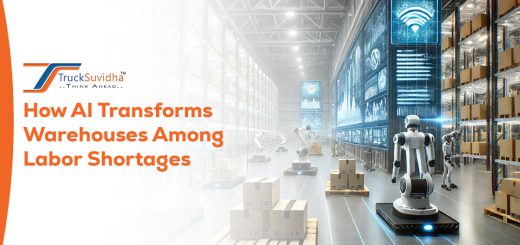Benefits of Warehouse Automation and Robotization
Warehouse automation and robotization have revolutionized how businesses operate and manage their supply chains. With rapid technological advancements, including robotics, artificial intelligence, and automation systems, warehouses are becoming more efficient, productive, and cost-effective than ever before. This article explores the numerous benefits of warehouse automation and robotization, highlighting how these technologies enhance inventory management, streamline order fulfillment, improve safety, and ultimately contribute to the overall success and customer satisfaction of businesses. Additionally, this article delves into future trends and challenges associated with implementing warehouse automation, providing valuable insights for those considering adopting these transformative technologies.
Development of Warehouse Automation
Warehouse automation has come a long way from its humble beginnings. Initially, it involved simple conveyor belts and material handling equipment. However, with advancements in technology, we now have automated systems that utilize robotics, artificial intelligence, machine learning, and the Internet of Things (IoT) to create intelligent and autonomous warehouses.
Increased Efficiency and Productivity
Automated Inventory Tracking and Management
One of the key benefits of warehouse automation is the ability to track and manage inventory in real-time accurately. With the help of barcode scanning, RFID tags, and automated data capture systems, businesses can effortlessly monitor stock levels, locations, and expiration dates. This leads to improved inventory accuracy, reduced stock discrepancies, and faster order fulfillment.
Optimized Order Picking and Packing
Automation enables efficient order picking and packing processes, reducing human errors and increasing throughput. Robots equipped with vision systems can quickly identify and retrieve items from shelves, while automated packing machines ensure precise and secure packaging. This not only speeds up order fulfillment but also minimizes mistakes, improving customer satisfaction.
Reduced Downtime and Improved Workflow
By automating repetitive and time-consuming tasks, warehouse automation minimizes downtime and optimizes workflow. Robots can handle tedious jobs such as palletizing, sorting, and loading/unloading, allowing human workers to focus on more complex and value-added activities. This results in improved efficiency, reduced labor fatigue, and ultimately, increased productivity.
Also Read:- Adopt IoT to Gain the First-Mover Advantage
Cost Reduction and Return on Investment
Economies of Scale and Labor Savings
Implementing warehouse automation can lead to significant cost savings. Automated systems allow businesses to handle larger volumes of inventory, leading to economies of scale. Additionally, by reducing the dependency on manual labor, organizations can cut down on staffing costs, particularly in labor-intensive operations like picking and sorting.
Minimized Error Rates and Returns
With automation, the likelihood of human errors decreases significantly. Accurate inventory tracking and automated order fulfillment systems minimize mistakes in shipping and reduce the number of returns due to incorrect or damaged products. This not only saves costs associated with returns and replacements but also boosts customer satisfaction and loyalty.
Long-Term Financial Benefits
Though initial investments in warehouse automation can be substantial, the long-term financial benefits far outweigh the costs. Increased efficiency, productivity, and accuracy result in improved customer service reduced carrying costs, and enhanced order accuracy. Ultimately, the return on investment (ROI) of implementing automation can be significant, leading to sustainable business growth.
Enhanced Inventory Management and Accuracy
Real-Time Inventory Tracking and Monitoring
Automation provides real-time visibility into inventory levels, allowing businesses to make informed decisions and respond promptly to changing demands. With accurate data at their fingertips, warehouse managers can optimize stock replenishment, minimize stockouts, and ensure optimal inventory levels to meet customer demands while avoiding excess stock.
Inventory Optimization and Demand Forecasting
Automation systems can analyze historical data and customer trends to forecast demand accurately. By using these insights, businesses can optimize inventory levels and improve supply chain planning. This enables them to strike the right balance between stocking enough inventory to meet customer demands and minimizing unnecessary carrying costs.
Elimination of Stockouts and Overstocking
With automated inventory management and demand forecasting, businesses can avoid stockouts and overstocking situations. Ensuring product availability while minimizing excess stock is crucial for customer satisfaction and cost control. Warehouse automation helps maintain optimal stock levels, ensuring that customers can always find what they need while preventing unnecessary inventory holding costs.
In Conclusion
Warehouse automation and robotization offer numerous benefits to businesses, including increased efficiency and productivity, cost reduction, enhanced inventory management, and improved accuracy. Embracing these technologies can empower organizations to stay competitive, meet customer expectations, and achieve long-term growth.




Recent Comments